Removing a kitchen soffit is not as hard as it may seem. In fact, with the right tools and instructions, it can be a relatively easy DIY project. This article will walk you through the steps involved in removing a kitchen soffit. It will also provide tips on how to do it safely and efficiently. So, if you are thinking about removing your kitchen soffit, read on for helpful advice!
What is a Kitchen Soffit?
A kitchen soffit is a boxed-in area that sits between your cabinets and the ceiling. It provides a space for plumbing, wiring, and other utilities to run through or be hidden away from sight. While this arrangement looks neat from the outside, it may not leave much headroom in your kitchen or provide an aesthetically pleasing look.
Kitchen Soffit Ideas
Make the Soffit Thicker
Kitchen soffits can be made thicker and more interesting by adding crown molding or trim. This can give the soffit a more elegant look and help draw attention away from the height of the ceiling. If you are planning to paint the soffit, use an undercoat primer before applying your chosen color to ensure a smooth finish.
Add Recessed Lighting
Adding recessed lighting is another way to increase visual interest in a kitchen soffit. Consider spacing out several small lights around the perimeter of the soffit. This will wash light across the walls and make them appear brighter, creating a much more inviting atmosphere in your kitchen.
Make the Soffit into a Beam or Pillar
Another way to add interest and introduce a different look in your kitchen is to turn the soffit into a beam or pillar. This will create a more defined shape, which can be useful if you want to draw attention away from the rest of the room. You could also paint this new feature for added color and texture.
Build New Shelves
If you would like to make the most of your soffit, consider adding shelves. This will give you extra room for pots and pans or display items. You could also use it as a place to store spices or hardware. For example, you could have a shelf devoted to cookbooks or arrange decorative items in an attractive pattern.
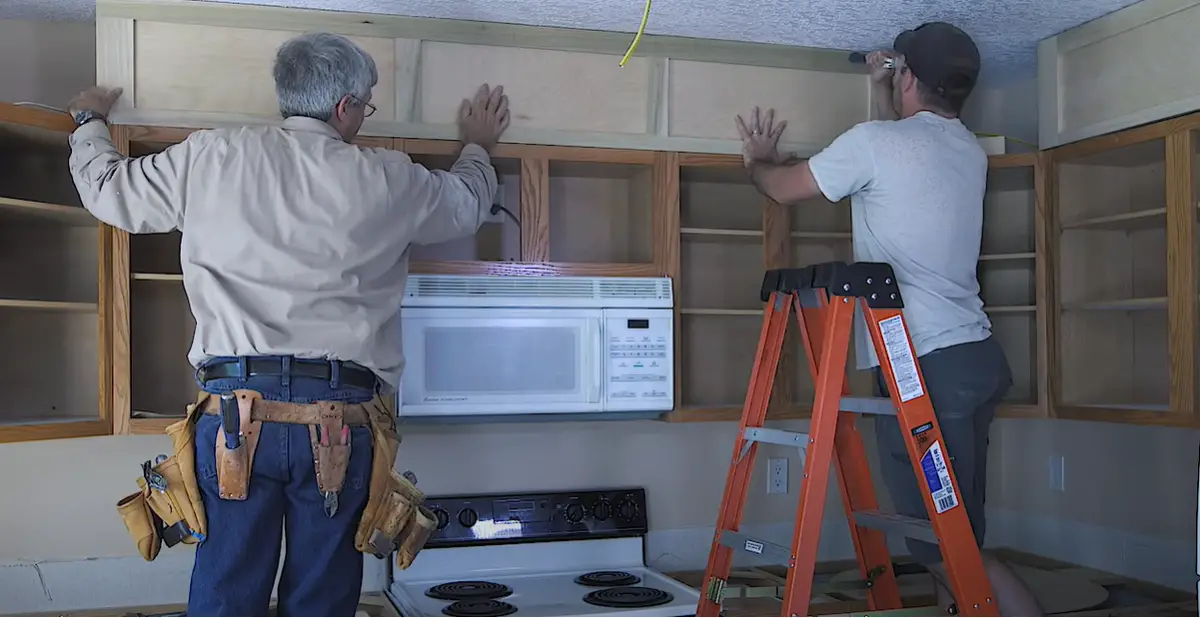
Cover the Soffit with Artwork
Another way to make the most of your kitchen soffit is to cover it with the artwork. This can be anything from photographs and paintings to wallpaper or fabric banners. This will help add more texture and color to the room and enable you to express yourself creatively.
Paint the Soffit
If you are looking for a more subtle way to change the look of your kitchen, then consider painting the soffit. Choose a color that will complement the other elements in your kitchen and add some interesting texture with a brush or roller. For example, you could use high-gloss paint to make the soffit stand out, or use a matte finish for a more muted look.
Make a Nook
By removing the soffit and building a small nook, you can create a cozy area for dining or relaxing. It’s best to aim for something that will fit into your existing kitchen design and not overpower it. You could also add shelves on either side of the nook for extra storage space.
Steps for Removing a Kitchen Soffit:
- Begin by turning off the power to any electrical outlets or lights near the soffit before beginning.
- Carefully remove any decorative molding or trim near the top of the soffit with a wide, flat-head screwdriver and hammer.
- Take down any wiring running to the lights or other fixtures within the soffit by gently pulling it away from the wall cavity and unscrewing it.
- Find all remaining screws that hold the soffit in place, these will be located on either side at each end of the soffit and also on either side along its length. Use a power drill for faster removal if possible and make sure to keep track of all removed screws as you will need them later for reassembly purposes.
- Lift up carefully on the soffit and remove it from its space. If the soffit is large, heavy, or awkward to maneuver, you may need a helper to assist with this step.
- Separate any pieces of the soffit that are connected together and place them aside until reassembly time.
- Carefully vacuum around the newly exposed edges of the wall cavity to ensure no screws or other materials have fallen in and will cause damage when something is placed back inside there again.
- Reattach any necessary electrical wires to what will become your new fixture, then replace all previously removed trim and molding before pushing the structure securely into place within the wall cavity again.
- Use drywall anchors to secure the structure if necessary and re-attach all removed screws in order to fully secure it.
- Check to make sure that the installation is completely stable before restoring power to any electrical outlets or lights within its area.
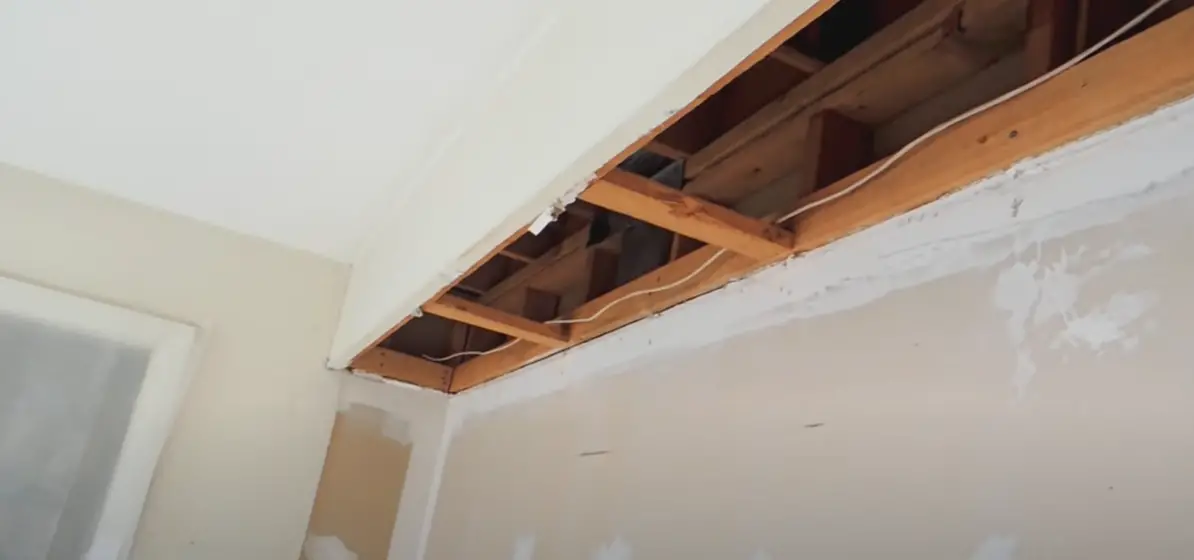
You can now enjoy your newly renovated kitchen without having a bulky soffit taking up valuable space! With these easy steps, you can have a refreshed kitchen in no time [2].
How to Remove Kitchen Soffit – 5 Careful Considerations
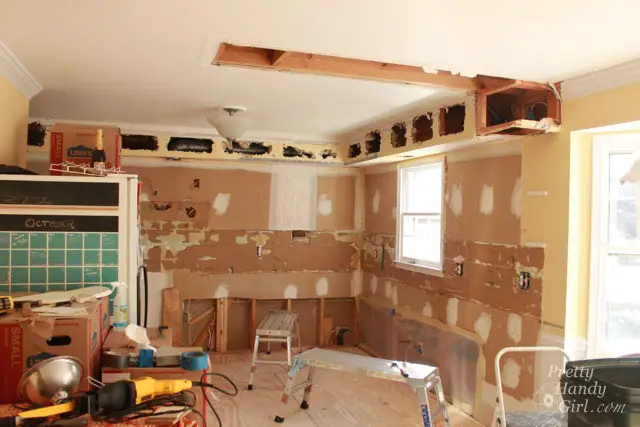
What’s Behind the Kitchen Soffit?
Kitchen Soffits are a common feature in many kitchen designs. They are usually found above the cabinets, providing additional storage space and hiding any unsightly wiring that may be running through the roof. But if you’re looking to remove your soffit, it’s important to consider all of the potential issues and ramifications before making any changes. Here are five things to consider when removing a kitchen soffit:
- Is there anything behind or connected to the Soffit? Before starting your project, check for any wires or pipes that may be entering or exiting the Soffit. Make sure you turn off any power sources if necessary before continuing with the project.
- Will removing the Soffit create structural damage? It’s important to consider the weight of the Soffit and any additional materials it contains, such as insulation or wiring. If you are removing a large soffit, ensure that there is no risk of damage to the surrounding walls or ceiling.
- Is there enough clearance? When removing a kitchen soffit, make sure that there is plenty of room to maneuver around the area. This will help you avoid any unnecessary accidents while working on the project.
How Will Removing the Soffit Impact the Cabinets?
Removing a kitchen soffit can create problems with the cabinetry below. If there is not enough support, the cabinets could collapse or become unstable, creating an unsafe situation. To avoid this, make sure to secure any loose parts and reinforce the cabinets before beginning the removal process. It means that you should also add in new brackets or supports if necessary.
Will Soffit Removal Affect the Ceiling and Walls?
When removing a soffit, you’ll need to take care not to damage the ceiling or walls in the process. Be sure to check for any potential flaws before starting, as these could cause issues when reinstalling new materials.
Will You Need Professional Help?
Depending on the size and complexity of your project, professional help may be necessary. If in doubt, always consult a licensed contractor before beginning any major home improvement projects. They can provide advice and assistance with the removal process, ensuring that everything is done safely and correctly.
What Should I Ask My Contractor?
When hiring a contractor to help with soffit removal, make sure to ask plenty of questions. Find out what kind of experience the contractor has and be sure to ask for references or past projects they have completed. Ask about their safety precautions and any additional costs associated with the job. Finally, be sure to get everything in writing before signing any contracts.
Can You Disguise the Kitchen Soffit?
If you’d like to keep the soffit but don’t want it to be visible, there are a few things you can do. You can install paneling or use trim pieces to cover up the framing. For an even more unique look, paint the soffit a different color than the surrounding walls and cabinets [3].
Removing a kitchen Soffit is not an easy task and should never be taken lightly. It is important to take into account all the potential issues and ramifications before making any changes. With careful consideration, though, you can remove your existing soffit safely and efficiently. Be sure to turn off any power sources if necessary, secure loose parts, reinforce cabinets, and check for flaws in the ceiling or walls. And of course, consult a licensed contractor if necessary for the best results. With these tips in mind, you can remove your kitchen soffit with ease and confidence.
What Do You Need to Remove a Soffit?
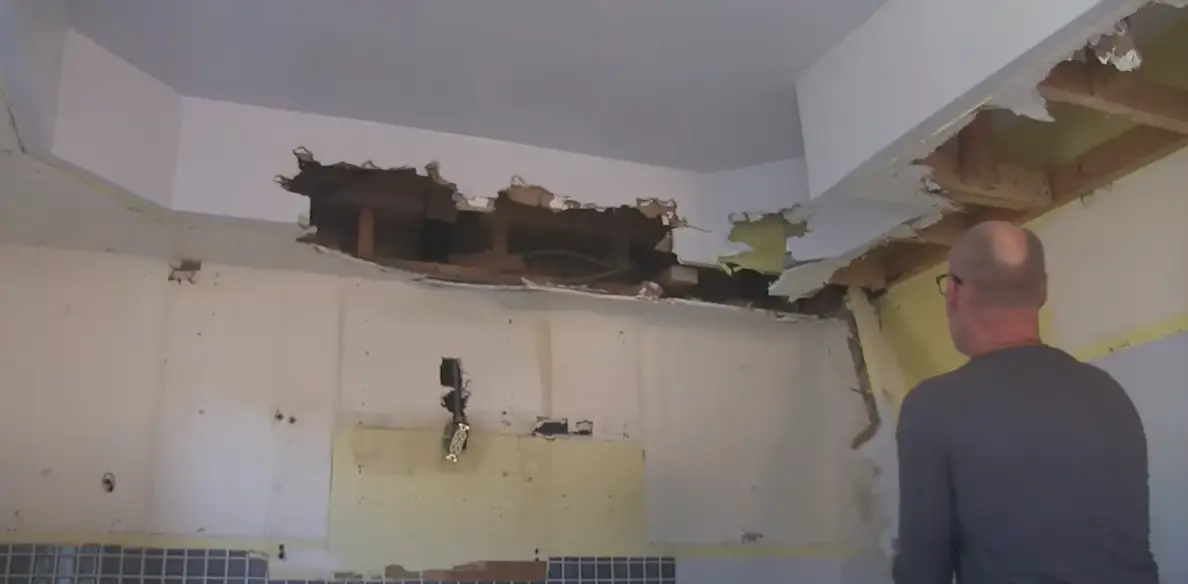
Removing a kitchen soffit is not as complicated as it may seem. To be able to remove a kitchen soffit, you should have the essential tools and materials that include:
- Stud finder
- Hammer
- Electric jigsaw
- Screwdriver
- Crowbar
- Putty knife
- Safety glasses
- Dust mask
You need a stud finder to locate the wall studs and determine which way they run. You’ll need a hammer to knock off any nails or screws that are holding the soffit on and an electric jigsaw for cutting away any pieces of wood that you may have to remove. A screwdriver is necessary for removing screws, while a crowbar proves helpful in prying apart different parts of the soffit. Use a putty knife for scraping away old adhesive materials from the wall, a dust mask to protect your nose, and safety glasses to protect your eyes.
How to take care of the kitchen soffit?
A kitchen soffit is a useful part of the kitchen interior, as it helps to hide plumbing and electrical cables, and other appliances. If you have a soffit in your kitchen, you might need to know how to take care of it. Here are some tips for correctly maintaining the kitchen soffit:
- Regularly inspect the soffit for any signs of damage or deterioration. If you notice any issues, it’s best to get them fixed as soon as possible.
- Make sure to clean the area around the kitchen soffit regularly with a damp cloth or vacuum cleaner to prevent dust and grime from building up.
- When cleaning, be sure not to use harsh chemicals that could damage the material.
If there are any cracks or gaps in the soffit, fill these with caulk or mortar to ensure it is properly sealed and protected from water damage.
FAQ
Why do kitchens have soffits?
Soffits are commonly found in kitchens and are used to cover up structural components of the kitchen such as plumbing pipes, electrical wiring, or ductwork. Soffits also provide a decorative finish to the cabinetry and provide an additional layer of protection from dust and dirt buildup on top of cabinets.
Are kitchen soffits in style?
Soffits can be in style if they are designed to match the rest of your kitchen design. If you have a contemporary or modern kitchen, try adding soffit panels with sleek lines and interesting designs to give your kitchen an updated look.
How do I remove a kitchen soffit?
To remove a soffit, it is important to take the necessary safety precautions first. Make sure that all electrical wiring and plumbing pipes are disconnected before attempting removal. Then, use a pry bar or screwdriver to gently detach the trim around the edges of the soffit from the walls or cabinets. You may need to use an oscillating saw for more stubborn pieces of trim. Once detached, carefully lift out the soffit, taking note of any pieces that may have been attached to it. After everything is removed, use a putty knife and sandpaper to smooth out the remaining surface. Finally, you can paint or replace the soffit with something new!
Are there any important tips for removing kitchen soffits?
Always be sure to use proper safety precautions when removing a kitchen soffit. Wear protective goggles and gloves to protect yourself from dust and debris. Additionally, if possible, enlist the help of another person before attempting removal, as it will make the job much easier. Also, be sure to label all wiring and pipes before disconnecting them to keep track of where they should go once the project is finished. Finally, use a vacuum cleaner to clean up all the dust and debris after removal is complete.
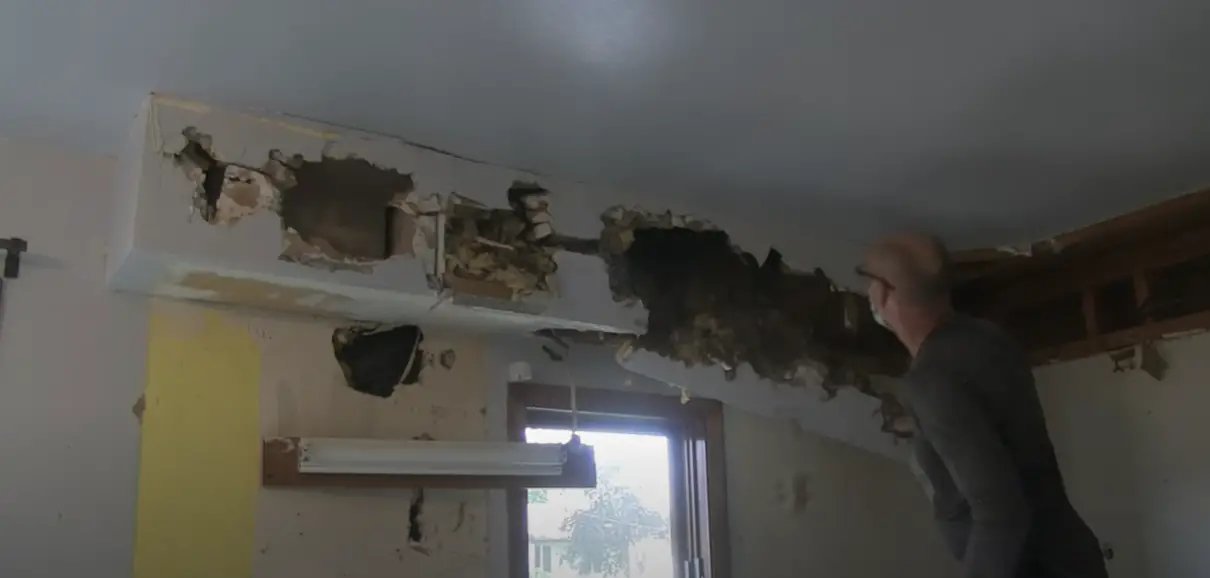
Do you have to remove cabinets to remove a soffit?
No, you do not need to remove cabinets to remove a soffit. In fact, it is usually easier to access the trim and edges of the soffit when the cabinets are still in place. However, if your cabinets have already been removed, then you will have an easier time removing the soffit as well.
Can I replace my existing kitchen soffit with something new?
Absolutely! Replacing your existing kitchen soffit with something new can be a great way to update the look of your kitchen without doing a full remodel. You can choose from a variety of materials such as wood, laminate, or metal for an updated look that matches the rest of your kitchen design. When shopping for new soffits, be sure to measure the area where you plan to install them and make sure that the new material will fit properly before purchasing.
How much does it cost to remove a kitchen soffit?
The cost of removing a kitchen soffit can vary depending on the size and complexity of the project. For example, if you plan to replace the soffit with something new, then you will also need to factor in materials and labor costs. However, if you are simply removing an existing soffit, then your costs will be much lower. On average, you can expect to pay anywhere from 150-400 dollars for the removal and disposal of an existing kitchen soffit.
How often should soffits be replaced?
Soffits should be replaced when they become worn or outdated. Additionally, if you are renovating your kitchen, then it is always a good idea to update the soffits as well to give your space an updated look. Generally speaking, soffits should be replaced every 5-10 years, depending on their condition.
Useful Video: Kitchen soffit tear out. Remove soffit, install drywall EASY!
Conclusion
Removing a kitchen soffit can be a daunting task. However, it doesn’t have to be. By following the steps outlined in this article, you can easily remove your kitchen soffit and create space for new cabinetry or additional storage. Just remember to take safety precautions before beginning the project and consult a professional if needed. With proper preparation, removing your soffit can be an easy and rewarding project.
References
- https://www.hardieboysinc.com/kitchen-soffit/
- https://prettyhandygirl.com/how-to-remove-soffit/
- https://www.riversideconstruction.com/how-to-remove-kitchen-soffit-5-careful-considerations-blog/





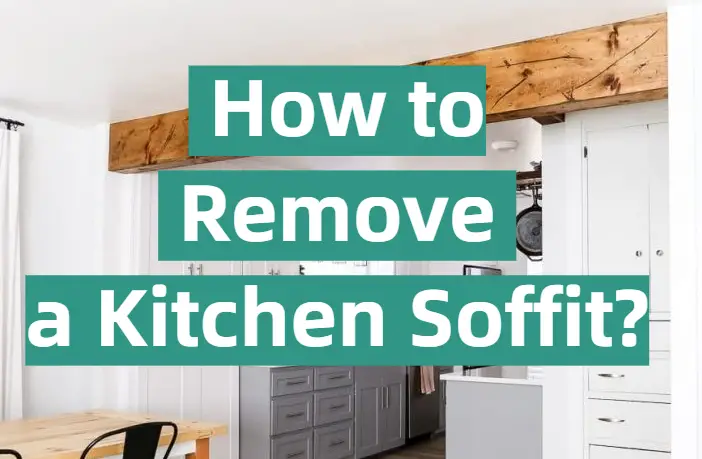







Leave a Reply